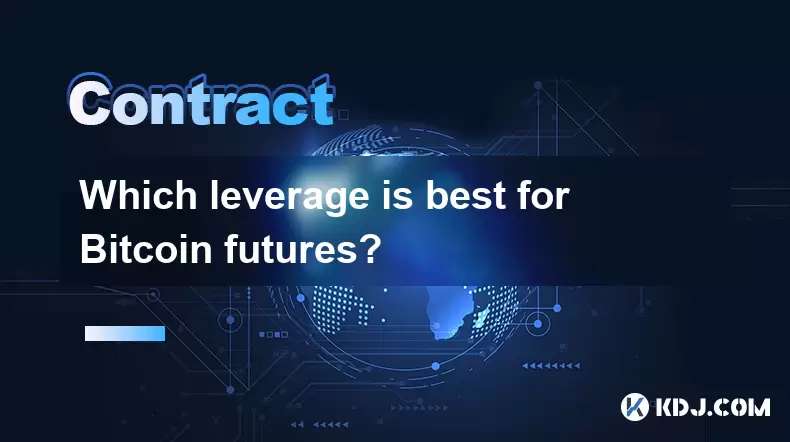-
 Bitcoin
Bitcoin $119300
1.07% -
 Ethereum
Ethereum $3730
3.87% -
 XRP
XRP $3.235
0.29% -
 Tether USDt
Tether USDt $1.000
0.00% -
 BNB
BNB $783.5
1.88% -
 Solana
Solana $188.7
0.25% -
 USDC
USDC $0.0000
-0.01% -
 Dogecoin
Dogecoin $0.2399
-0.44% -
 TRON
TRON $0.3157
2.37% -
 Cardano
Cardano $0.8254
1.94% -
 Hyperliquid
Hyperliquid $42.83
0.14% -
 Stellar
Stellar $0.4372
3.21% -
 Sui
Sui $3.859
4.91% -
 Chainlink
Chainlink $18.53
3.53% -
 Hedera
Hedera $0.2464
0.01% -
 Bitcoin Cash
Bitcoin Cash $519.8
2.46% -
 Avalanche
Avalanche $24.24
2.17% -
 Litecoin
Litecoin $113.7
0.73% -
 UNUS SED LEO
UNUS SED LEO $8.990
0.30% -
 Shiba Inu
Shiba Inu $0.00001390
0.21% -
 Toncoin
Toncoin $3.188
1.49% -
 Ethena USDe
Ethena USDe $1.001
0.02% -
 Polkadot
Polkadot $4.090
-0.91% -
 Uniswap
Uniswap $10.40
4.08% -
 Monero
Monero $326.6
3.12% -
 Bitget Token
Bitget Token $4.627
-0.42% -
 Pepe
Pepe $0.00001281
0.76% -
 Dai
Dai $1.000
0.01% -
 Aave
Aave $291.6
0.98% -
 Cronos
Cronos $0.1269
7.26%
Which leverage is best for Bitcoin futures?
Choosing the right leverage in Bitcoin futures depends on risk tolerance, strategy, and market conditions to balance gains and liquidation risks.
Jul 21, 2025 at 06:42 pm

Understanding Leverage in Bitcoin Futures
Leverage in Bitcoin futures trading allows traders to control a larger position with a smaller amount of capital. This means that even a small movement in the price of Bitcoin can result in significant gains or losses. The best leverage for Bitcoin futures depends on several factors, including the trader’s risk tolerance, trading strategy, and market conditions. Understanding how leverage works is essential before deciding on the optimal level.
In futures trading, leverage is often expressed as a ratio, such as 10x, 25x, or even 100x. A 10x leverage means that a trader can control a position worth 10 times their initial investment. However, higher leverage also increases the risk of liquidation. Therefore, choosing the right leverage level is crucial for long-term success in Bitcoin futures trading.
Factors Influencing Leverage Choice
- Risk Tolerance: Traders with a low-risk appetite may prefer lower leverage, such as 2x to 5x, to minimize potential losses.
- Trading Strategy: Scalpers and day traders might opt for higher leverage, such as 20x or more, to maximize short-term gains.
- Market Volatility: During high volatility, using lower leverage can help avoid liquidation due to sudden price swings.
- Account Size: Smaller accounts may require higher leverage to open meaningful positions, but this increases the risk per trade.
Each of these elements plays a role in determining the most suitable leverage level. Failing to account for these factors can lead to rapid losses or missed opportunities in volatile markets.
Common Leverage Options in Bitcoin Futures Markets
Major cryptocurrency exchanges like Binance, Bybit, and OKX offer a variety of leverage options for Bitcoin futures contracts. Some of the commonly available leverage levels include:
- 5x to 10x: Considered conservative, suitable for beginners or long-term holders.
- 20x to 50x: Popular among experienced traders who aim for higher returns with moderate risk.
- 100x: Typically used by professional traders and arbitrageurs who closely monitor their positions.
Choosing 100x leverage can lead to significant profits with minimal capital, but it also increases the chance of liquidation. Conversely, opting for 5x leverage may limit profit potential but also reduces the risk of being liquidated quickly.
How to Calculate Risk with Leverage
To determine the best leverage for Bitcoin futures, traders must understand how to calculate risk. The formula for calculating the liquidation price is essential:
Liquidation Price = Entry Price ± (Margin / Position Size) × Entry Price
For example, if a trader opens a $10,000 long position with 10x leverage and $1,000 margin, the liquidation price will be closer to the entry price compared to a 5x leverage trade with the same margin. Higher leverage reduces the buffer before liquidation, making it more dangerous in volatile conditions.
Additionally, traders should use stop-loss orders and position sizing strategies to manage risk effectively. This includes determining how much of their capital they are willing to risk per trade, typically between 1% to 5%.
Practical Tips for Choosing the Right Leverage
- Backtest Strategies: Before trading with real funds, simulate your strategy with different leverage levels to see how it performs.
- Use Demo Accounts: Many platforms offer demo trading, allowing users to practice with leverage without risking real money.
- Monitor Liquidation Levels: Always be aware of your liquidation price and set alerts to avoid sudden losses.
- Avoid Overleveraging: Just because high leverage is available doesn’t mean it should be used. Stick to a leverage level that aligns with your risk management plan.
By following these steps, traders can optimize their leverage usage and avoid unnecessary exposure to market swings.
Frequently Asked Questions
Q1: Can I change leverage during a trade in Bitcoin futures?
Yes, most platforms allow you to adjust leverage before opening a position or while holding one, depending on the exchange’s rules. However, changing leverage mid-trade can affect your margin requirements and liquidation price.
Q2: Does leverage affect the funding rate in Bitcoin futures?
No, the funding rate is determined by the difference between the perpetual contract price and the spot price. Leverage does not directly influence funding rates, but higher leverage can amplify the impact of funding fees on your account.
Q3: Is 100x leverage safe for beginners?
No, 100x leverage is not recommended for beginners due to its high risk. A small adverse price movement can result in immediate liquidation. Beginners should start with lower leverage and gradually increase it as they gain experience.
Q4: What is the minimum leverage available on most exchanges?
Most exchanges offer leverage as low as 1x (no leverage) up to 5x for conservative traders. Some platforms allow custom leverage settings, giving users the flexibility to choose their preferred level.
Disclaimer:info@kdj.com
The information provided is not trading advice. kdj.com does not assume any responsibility for any investments made based on the information provided in this article. Cryptocurrencies are highly volatile and it is highly recommended that you invest with caution after thorough research!
If you believe that the content used on this website infringes your copyright, please contact us immediately (info@kdj.com) and we will delete it promptly.
- Bitcoin, Jim Cramer, and the US Deficit: A Wall Street Story
- 2025-07-25 10:30:11
- TGEs, Scalability & Privacy Tech: Decoding the Future of Blockchain
- 2025-07-25 10:30:11
- Ben Askren, FUNKY Memecoin, and the Fallout: A New York Minute
- 2025-07-25 10:50:11
- TRON, Crypto Payroll, and Stablecoins: A New York Minute on the Future of Finance
- 2025-07-25 08:30:11
- WazirX, Revote, and Crypto Unlock: A New York Minute on the Latest Developments
- 2025-07-25 06:50:11
- Hong Kong Stablecoin Regulation: Navigating the Hype and Hurdles
- 2025-07-25 08:30:11
Related knowledge

Why is my Bitstamp futures position being liquidated?
Jul 23,2025 at 11:08am
Understanding Futures Liquidation on BitstampFutures trading on Bitstamp involves borrowing funds to open leveraged positions, which amplifies both po...

Does Bitstamp offer inverse contracts?
Jul 23,2025 at 01:28pm
Understanding Inverse Contracts in Cryptocurrency TradingIn the realm of cryptocurrency derivatives, inverse contracts are a specific type of futures ...

How to find your Bitstamp futures trade history?
Jul 23,2025 at 08:07am
Understanding Bitstamp and Futures Trading AvailabilityAs of the current state of Bitstamp’s service offerings, it is critical to clarify that Bitstam...

Can I use a trailing stop on Bitstamp futures?
Jul 23,2025 at 01:42pm
Understanding Trailing Stops in Cryptocurrency TradingA trailing stop is a dynamic type of stop-loss order that adjusts automatically as the price of ...

Can I use a trailing stop on Bitstamp futures?
Jul 25,2025 at 02:28am
Understanding Trailing Stops in Cryptocurrency Futures TradingA trailing stop is a dynamic type of stop-loss order that adjusts automatically as the m...

What are the trading hours for Bitstamp contracts?
Jul 24,2025 at 11:56am
Understanding Bitstamp and Contract Trading AvailabilityBitstamp is one of the longest-standing cryptocurrency exchanges, established in 2011 and head...

Why is my Bitstamp futures position being liquidated?
Jul 23,2025 at 11:08am
Understanding Futures Liquidation on BitstampFutures trading on Bitstamp involves borrowing funds to open leveraged positions, which amplifies both po...

Does Bitstamp offer inverse contracts?
Jul 23,2025 at 01:28pm
Understanding Inverse Contracts in Cryptocurrency TradingIn the realm of cryptocurrency derivatives, inverse contracts are a specific type of futures ...

How to find your Bitstamp futures trade history?
Jul 23,2025 at 08:07am
Understanding Bitstamp and Futures Trading AvailabilityAs of the current state of Bitstamp’s service offerings, it is critical to clarify that Bitstam...

Can I use a trailing stop on Bitstamp futures?
Jul 23,2025 at 01:42pm
Understanding Trailing Stops in Cryptocurrency TradingA trailing stop is a dynamic type of stop-loss order that adjusts automatically as the price of ...

Can I use a trailing stop on Bitstamp futures?
Jul 25,2025 at 02:28am
Understanding Trailing Stops in Cryptocurrency Futures TradingA trailing stop is a dynamic type of stop-loss order that adjusts automatically as the m...

What are the trading hours for Bitstamp contracts?
Jul 24,2025 at 11:56am
Understanding Bitstamp and Contract Trading AvailabilityBitstamp is one of the longest-standing cryptocurrency exchanges, established in 2011 and head...
See all articles

























































































